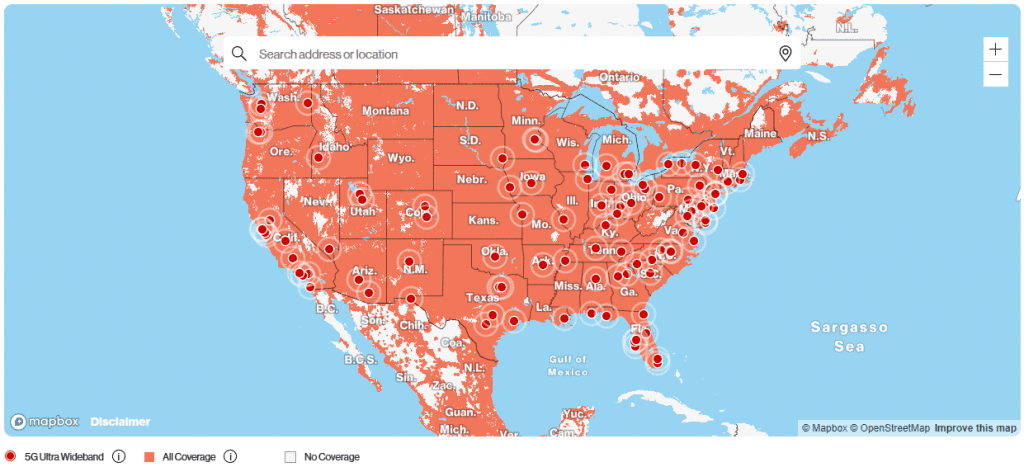We live in a world of fast communication, low attention span, and daily evolving of technology. We are all wired and addicted to the internet and of course, our devices. We need faster speeds, new improvements and smart maintenance. Sounds like the future is now.
All of this seems to arrive at our doors with the development of the latest generation of cellular wireless or 5G. This generation is supposed to make our lives better and way fleeter. Like we don’t already have the fastest connection and we are not connected to every corner of the world. As human species, we always want more and we want it now.
Like all controversial subjects, the subject of 5G holds highly differing viewpoints. You may have stumbled upon this article when searching for a “5G tower near me” to improve your connection and attach yourself on the nearest 5G antenna with your new 5G device. Or you may belong to the other group of individuals concerned about having a 5G tower near them and want to know more about the matter. However, it doesn’t matter. What matters is that you tripped upon this article and with reading further you will learn a lot of new things about 5G and encounter some unexpected truths and discoveries.
What’s more, we are offering you the most reliable tools for detecting 5G towers near you. Therefore, if you are interested in what in detail is 5G, how it works, what are the main concerns and is it dangerous for your health, this is the right text for you. Besides, if you want to know the perfect ways to detect 5G towers, just keep reading. We are certain that cloudy puzzles will resolve and you will finish this article full of awareness. Let’s begin!
What Is a 5G Network?
5G stands for the newest generation of cellular wireless or the fifth generation of cellular wireless network available today. As we all know, the most modern form of mobile communication and mobile networking technology has its predecessors, and they are well familiar and widely used. We have all heard about 1G, 2G, 3G, and 4G networks.
They were all created to make wireless communication faster than their forerunners. Thus, the reason behind the development of the 5G wireless network is apparent. Indeed, people want to stay online longer, need faster communication tools, and the world of technology is evolving by the day. Consequently, 5G is supposed to make everything smoother and sharper.
Nevertheless, if your movie or your favorite music album downloads for 3 seconds, remember that everything around you also becomes way more connected and way more dynamic.
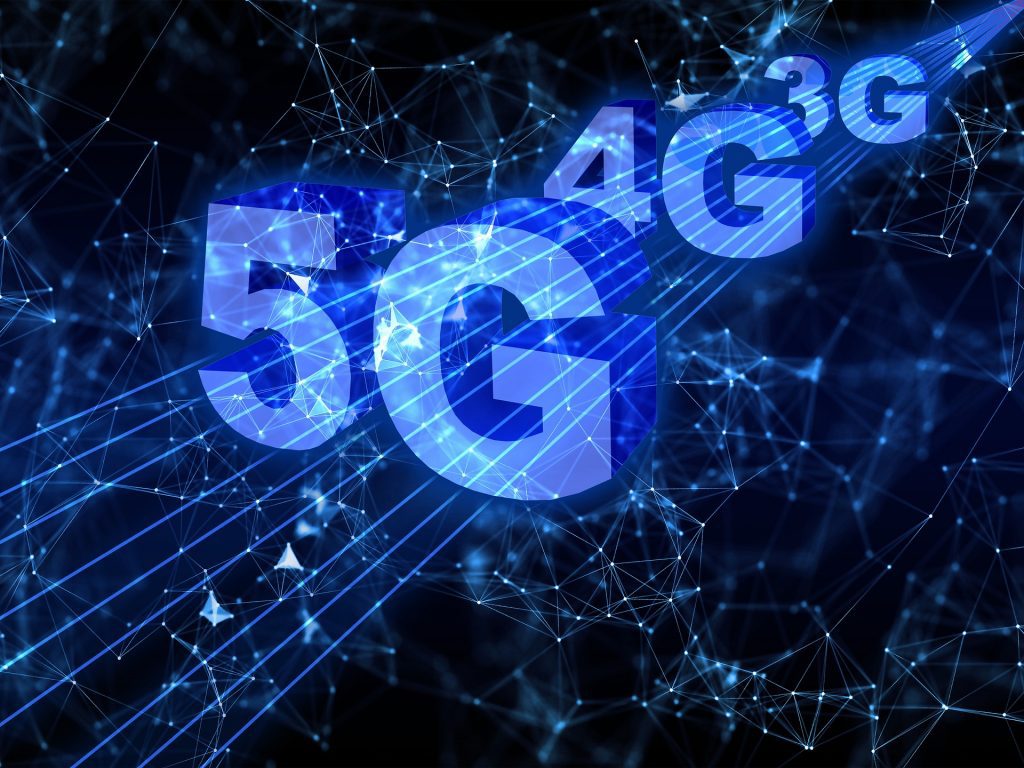
Hereabouts, we discuss AI, smart vehicles, advanced robotics, immediate access to files attached to the cloud, and everything you can’t even imagine. Moreover, we allude to smart homes, towns, cities, countries. In precise, a smart life. Everything connected to everything, an outburst of new products, devices, services. Sounds Sci-Fi? Well, welcome to the future!
Is 5G as good and harmless as it sounds?
In reality, these things can and will happen, but the real question is, are they as good for us as they seem? Many of you have heard that although the hype about 5G is immense and people are saluting the installation of 5G towers, there are still those who understand that serious health concerns arise.
Naturally, numerous experts warn about the dangerous effects that 5G and EMF may have on the well-being of the world’s population. Plus, with everything sounding too good to be true, this may be the real question we have to pose to ourselves: is 5G so worth it, and should we risk our and the health of our planet to make the world faster than it is? We believe that everything is already too fast, don’t you?
What’s the Difference Between 5G and Other Networks?
We are all aware that with the arrival of 4G, the entire world got immediate access to mobile data, and devices started progressing immediately. All our mobiles are connected to 4G networks, and thanks to that, we can communicate with the other end of the planet and exchange databases daily.
Everything became possible because of the radiofrequency waves that our devices use to keep us connected. But, even though 2G and 4G brought mobile data, they weren’t fast enough because they communicated at a lower radiofrequency level.
How Does Radiofrequency Function?
To understand the difference between 5G and other networks, we have to look closely at the radio spectrum and its radiofrequency bands. Every different band has a unique radiofrequency limit. Moreover, the radio spectrum is divided into ranges varying from extremely low to extremely high frequencies.
An example of an extremely low radiofrequency is navigation which uses a frequency band of 3KHz to 30KHz. On the other hand, the FM radio and VHS Television use a very high-frequency band from 30MHz to 300MHz. And following, at an ultra-high frequency band, are mobile networks, wireless networks, GPS, 4G, and UHF TV.
As an illustration, the 3G network uses a frequency band of 1.8 GHz to 2.5 GHz and delivers a speed of 2MB per second. In contrast, 4G uses a frequency band of 2 GHz to 8GHz, and the data delivery increases to 20MB per second. And when it comes to 5G, that is way faster, as we already noticed, and this network uses an extremely high radio frequency band.
Also read: What Does a 5G Tower Look Like?
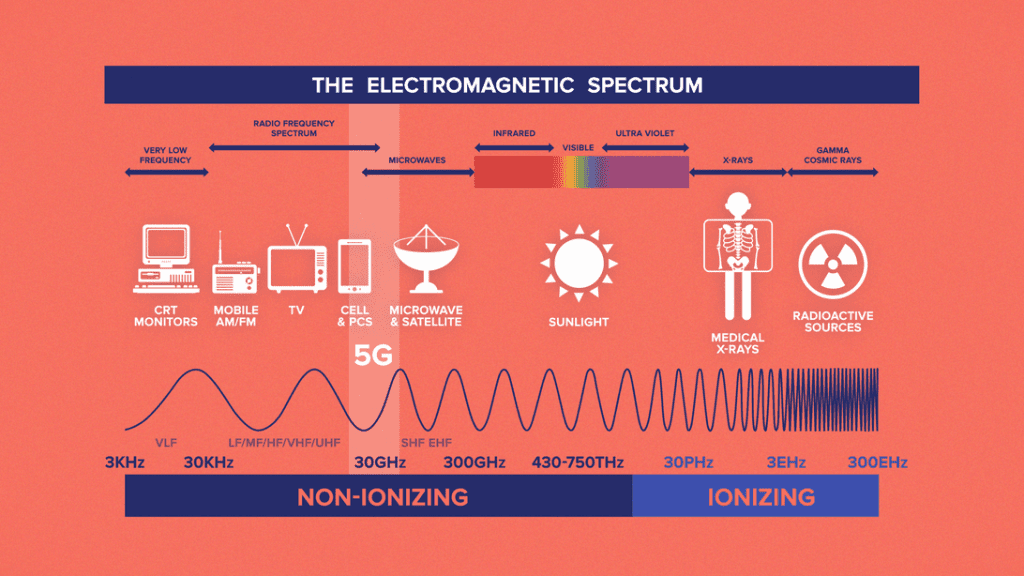
As some of you may have heard by now, 4G networks use specific 4G macrocell towers that support many devices. Accordingly, they cannot hold extremely high radio frequencies because they are made to support the 4G network and its particular radiofrequency band. Undoubtedly, the 5G network can’t connect to a 4G tower, and for 5G to start working, the world must develop a whole new infrastructure and system. That is one of the main differences when comparing 5G and all other networks, and as a result, many concerns occur.
What Does It Take for the 5G Network to Work?
Three key technologies need to be implemented for a 5G network to work: small cells infrastructure, MIMO, and beamforming. Before going into depth and explaining these advanced technologies, we must mention how extremely high frequencies work.
EHF and Millimeter Waves
Besides 5G, radio and astronomy satellites also communicate through EHF. The range of the EHF is from 30GHz to 300GHz, and this band is also known as the millimeter band. The wavelengths in this millimeter band run from 1 to 10mm and are scientifically recognized as millimeter waves or mmW.
So, if low radio frequencies cover vast distances of 100km, the extremely high radio frequencies cover distances millimeters. For example, a radio frequency of 300GHz covers a length of just 1mm. So, the higher the frequency, the shorter the wavelength.
Small cells
Small cells are radio stations that use millimeter waves for transmission and only cover short distances. Moreover, these mmW can’t get past a cloud or an automobile, so for small cells to work, they have to be positioned very close to each other. That way, the connection is not interrupted, and small cells cover larger areas.
These base stations often work on low power but can support multiple devices and carry a large volume of data. They are designed to look unobtrusive and are significantly smaller than 4G or 3G towers. They can be easily installed everywhere to be close to users and produce a continuous connection.
MIMO (Multiple Input and Multiple Output) and Beamforming
The global concept for beamforming was formed in 1906 for trans-oceanic radio communications. What is beamforming in particular?
Beamforming is the application of various radiating elements, which transmit the same signal at an equal wavelength and phase. That generates a single antenna with a more extended and targeted stream, reinforcing the mmW in a specific direction.
By implementing beamforming, a small cell tower can simultaneously locate any user at any given place and time and transmit it to them using multiple antennas. The more radiating the elements that form the antenna, the more consistent and tighter the beam.
Massive MIMO and 5G Networks
On the other hand, MIMO or Multiple Input and Multiple outputs have since always been used in commercial Wi-Fi systems, but 5G networks demand the use of a massive MIMO. In detail, MIMO uses multiple antennas, which highlight the performance and improve both transmission and reception.
This aids the 5G network to keep up with the massive data rates, and the connection remains uninterrupted. With MIMO operating many antennas to streamline transmission and beamforming and directing those antennas to specified locations, 5G offers fast and continuous service.
However, not everything is as simple as it sounds. For a 5G network to proceed to work correctly, numerous small cell antennas are required. Because mmW crosses very short distances, these thousands of small cell antennas are developed to compensate and provide clients with super-charged racing speeds. Plus, this infrastructure, of course, costs a great deal of money.
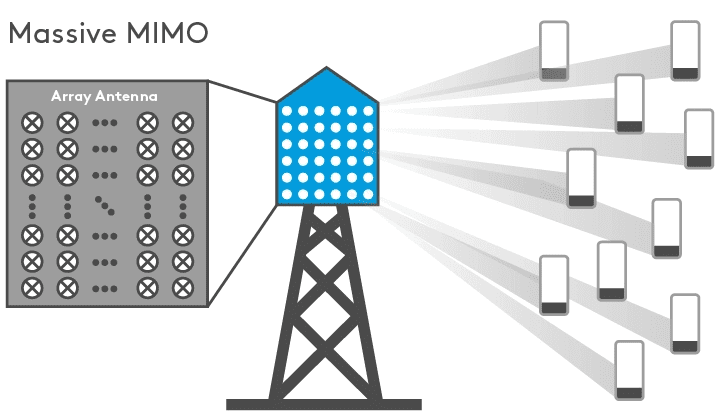
Mobile carriers are often either not equipped enough or don’t have the background to invest that kind of money. As a solution, current 5G networks also run on other radiofrequency spectrums, such as low band and mid-band connections. As a result, using different radiofrequency bands causes a lapse in speed, although always connected to a network.
5G Deployment Plans
In early 2019, global mobile operators began launching the 5G network. Consequently, all phone manufacturers started building smartphones that support 5G. Today, 5G is implemented in many countries, and several phone carriers are proposing various frequency bands. For instance, in the USA, mobile carriers perform different deployment plans to provide a solid 5G network.
If you ask yourself: are there any 5G towers near me, there is a way to examine and inspect whether the area you live in has 5G coverage and whether the carrier you use supports low band or mid-band spectrums. And we will come back to that subject later in this article.
At the moment, Spectrum uses more ranges than any other mobile carrier in the United States and employs speeds of 800MHz, 1.9GHz, and 2.5GHZ radiofrequency bands. On the other side of the coin, careers such as T-Mobile and AT&T use mid-band and low band spectrums in their 5G plans.
What Are the Real Dangers of 5G Networks?
As we defined multiple times, for a 5G network to work perfectly, thousands of small cell antennas need to be placed everywhere on the planet. And before these antennas are built on every corner of the world, we must caution that mid and high radiofrequency radiation exposure is often linked to several adverse biological effects.
First and foremost, the WHO associated radiofrequency radiation with cancer and asserted that it might be a possible 2B cancerogenic. Moreover, radiofrequency radiation exposure is shown to cause DNA single and double-strand breaks, oxidative stress and damage, disruption of cell metabolism, production of stress proteins, disturbance to brain glucose metabolism, and many more.
An expansion in electromagnetic field radiation, although involuntary, will be massively seen in the world with the development of the 5G networks. Although the severe effects and hazards of the 5G network are still not in-depth examined, and many studies go on at this very moment, many scientists have already warned us about the side effects 5G can provoke.
Without a doubt, EMF and RF have already been proven unsafe to human health, and high radiofrequency cell antennas at every step of the way may put our bodies and systems in great jeopardy.
What Is EMF Radiation?
We have all studied elementary physics, and we all understand what an electromagnetic field is. Electric fields exist everywhere, whether the electricity is on or off; there is an electric field with power outlets. Yet, magnetic fields occur only when electricity flows, and together with electric fields, they create electromagnetic fields.
Electromagnetic radiation or EMF is a spectrum of different electromagnetic fields with separate radio frequencies. Like you presumably understood by now, these frequencies are measured in HZ or hertz- which covers the number of cycles created per second.
As described in this article, the lower radio frequency bands are often not strong enough and are not fatal for bio flora, fauna, and our health. Still, high radio frequencies in the megahertz, gigahertz, and terahertz spectrum are also known as nonionizing radiation and raise different health concerns.
We are exposed to radiation every day, primarily by using our devices. Our smartphones, tablets, computers, Wi-Fi stations or antennas, all produce minimal EMF radiation. So far, the most widely known side-effect of EMF radiation is heating.
In other words, exposure to high doses of RF-EMF can cause a massive rise in body temperature and, even more, lead to burns and further tissue damage. Of course, the EMF radiation that our devices produce isn’t enough to cause an alarm. Nevertheless, the development of 5G and its millimeter waves arrives and waves a major red flag.
Health Concerns Regarding 5G and EMF
Most importantly, 5G is cancerogenic. The longer the exposure to high doses of EHF, the higher the risk for certain cancers. And not only that, but EMF radiation can also lead to several other biological and neurological diseases. As the EMF radiation and the frequency go up, the main organs for health concerns also become the most exposed ones, the skin, eyes, and testes.
The side effects of the 5G network on the skin
Not only 5G can cause physical pain to our skin, but it can also provoke many skin disorders and even skin cancer. According to many scientists, the millimeter wavelengths will undoubtedly affect the skin of human beings and the skin of other living creatures. The penetration of a 90GHz wave, as an illustration, penetrates the skin, and 90% of the transmitted power is absorbed by the epidermis and dermis layer.
The side effects of the 5G network on the eyes
Even low-level millimeter-wave radiation caused lens opacity in experimental rats, which is the main reason for developing cataracts. Furthermore, the radiation of a 90GHz wave penetrates far beyond the surfaces of the eyes. Many studies on animals show that a short exposure can lead to damage to the lens epithelial cells. And even further, by penetrating one of the most delicate organs in our bodies, EMF can cause ocular melanoma.
“A Massive Experiment on the Health of All Species”
We have a reason to believe that scientists who regularly warn about the perils of long-term mmW exposure are correct. We have encountered numerous studies that verify that short-term exposure can lead to psychological effects, damage of the peripheral nervous system, impairment of the immune system, and deterioration of the cardiovascular system. Additionally, the long-term effects are even scarier.
The Rimizini experiment
One of the most important of these studies is research conducted by the Rimizini institute in Italy. This study reinforced the connection between small cell tower radiation and cancer by testing laboratory rats. In detail, the examination exposed 2448 rats to environmental cell radiation for 19 hours per day. We must consider the fact that these radiation levels were far lighter than those used in the studies for cell phone radiation. Unmistakably, this exposure led to increased malignant brain tumors in female rats and precancerous conditions like Schwann cells hyperplasia in both female and male rats. Even more intriguing is that these radiation exposures were below the US FCC limits, which means a person can legally be exposed to such radiation levels. Consequently, we don’t want to imagine what happens when the radiofrequency rises?
What do doctors and scientists think about 5G and its side effects?
These and many other studies and concerns are highly supported by Dr. Joel Moskowitz, a public health professor at the University of California. According to Dr. Moskowitz, the development of the 5G technology is “A massive experiment on the health of all species.” Furthermore, Dr. Moskowitz affirmed that mmW used in 5G technology can easily be absorbed by the skin and the eyes and can affect both, as well as sweat glands, testes, and the peripheral nervous system.
And finally, over 240 doctors and scientists from more than 40 countries signed the International EMF Scientist Appeal, which asks for regulation of the limits to 4G/5G radiofrequency exposure. This appeal declares that EMF affects all living organisms, and side effects from EMF exposure include cancer risk, cellular stress, increase in dangerous free radicals, genetic damage, changes of the reproductive system, learning and memory defects, neurological disorders, and significant negative impacts on the well-being of humans. And terrible effects go beyond the human race; EMF radiation is hazardous for the planet and all life living on Earth.
Are There 5G Towers Near Me?
Having all this information in mind, you probably asked yourself by now this very important question. Are there 5G towers near me, and how can I find out? Thankfully, there are a few different ways to find out. Various websites offer location maps and reliable information. Here, we listed the most trustworthy and user-friendly ones for you to resolve the puzzling subject.
Ookla 5G Interactive Map and 5G Tower Locator
One of the most authentic and most accessible tools for locating 5G towers near you is the Ookla 5G location map. Ookla’s map is a handy tool because it offers 5G towers locations for the whole planet. Moreover, the map is updated every week.
When looking for an answer to the question: are there any 5G antennas near me, Ookla comes to the rescue. The first thing you see when you enter Ookla’s webpage is the interactive flat world map with the marked locations of 5G networks. These areas are illustrated as dots with a numerical value. The figures show the number of towers in an area. When you zoom in, Ookla presents you with more detailed data.
How to find a 5G tower on Ookla?
On the top right corner of the map, you will notice the deployment types. There are three kinds of deployment types, commercial availability, limited availability, and pre-release. In specific, commercially available 5G towers are open to the public in the area. A 5G-enabled device can connect to every commercially available 5G tower. Secondly, the limited availability of 5G towers are present in the area; though, they are not registered on a commercial network. Devices that can connect to such networks are often particular careers, sectors, or industries. Thirdly, the pre-release 5G towers are built and in place but are still being tested and unavailable for use.
When you are interested in the number of 5G towers in your area, you should select all the deployment types’ filters. Although 5G pre-release towers are still not employed, be sure that soon they’ll be. It won’t be long before they become commercially or limitedly available. On the other hand, if you are looking for commercially active 5G towers and their careers, you should select just the commercial availability filter. The next step is to choose your location and zoom in. When you zoom in on the spot, you have to click on the numbered dot to see who the carrier is for 5G in the chosen area.
What does Ookla provide for its users?
By using the Ookla map, you can explore any location in the world and examine all of the installed 5G towers and antennas. Even though Ookla is very reliable and specific, it only provides you with information about 5G coverage and nothing else. All other information regarding 5G towers isn’t available. For instance, you won’t find information to separate between the low and high bands. Nonetheless, we think that by using Ookla, you can gather the required information and educate yourself on where and what kind of 5G towers are built.

T-Mobile 5G Coverage
This is another solution to your question, “Are there 5G towers near me?” The world’s widely known mobile carrier T-Mobile has its live coverage 5G map. This map, however, shows exclusively the 5G antennas and towers that are under the jurisdiction of T-Mobile. Not only can you see 5G coverage by T-Mobile, but also you can scan and detect 4G/LTE coverage. We must underline that the T-Mobile Coverage map is for the USA alone.
One of the main characteristics of this map is that you can search manually by entering a specified location, such as the state you are interested in, the city, or the ZIP code. Moreover, this live coverage map only shows commercially available 5G and 4G/LTE networks.
How to look for a 5G tower on T-Mobile 5G map?
When opening the 5G Coverage Map, you will see a legend at the bottom of the map. You will notice that different colors have distinct meanings: the dark purple-maroon color means that there is 5G ultra capacity in the area, and the dark pink means a 5G Extended range. Additionally, the light purple-pink color shows where in the United States there is 4G/LTE coverage, and the light pink color shows 2G/3G coverage. Finally, the white color on the map means that there is no coverage in the area. By clicking on any place, you are offered a window with information on what kind of coverage is available.
What does the T-Mobile 5G map provide for its users?
To wrap it up, these are the features of the T-Mobile 5G live coverage map, and this map doesn’t give you loads of details. Anyway, it’s somewhat helpful to confirm whether the antenna you have encountered physically is a 5G antenna and when you are interested in identifying 5G antennas anywhere near you while living in the USA.
Verizon 5G Coverage Map
Similar to T-Mobile’s live coverage map, Verizon too offers its interactive map, which displays where in the United States there is 4G/LTE or 5G coverage. You will encounter a user-friendly legend on the left side of the map that utilizes different colors to illustrate the network coverage.
The maroon circle on the top of the legend shows a 5G tower that is Ultra Wideband. These 5G Ultra Wideband points mean an extra fast 5G coverage that peaks at speeds of more than 2 GB per second.
Just like on T-Mobile’s live coverage map, the legend of Verizon also represents network coverage with different colors. The red color shows whether a 5G network covers the area nationwide and includes 4G/LTE coverage. The orange color is only for the 4G/LTE coverage by Verizon. The 3G coverage is colored in grey on the map, while the areas not covered are white.
The 5G Edge network by Verizon
Another feature of Verizon’s live coverage map is the information about their 5G Edge coverage for businesses. The 5G Edge network by Verizon is where the cloud meets the network, as defined by the carrier. In detail, the 5G edge is a mobile edge computing platform that is possible for businesses. This network allows developers to build apps for mobile-end users and wireless edge devices with ultra-low latency.
What does the Verizon 5G map provide for its users?
In summary, these are all of the features of the Verizon 5G coverage map. Again, this map doesn’t show additional erudition, but combining all of the tools and exploring the three maps listed here will get you some info on the nearest 5G tower. In the end, the most crucial question is whether your area has a 5G antenna or tower and whether your home is covered with a 5G network, so you will acknowledge if you are undergoing even low EMF radiation.
How to Spot 5G Towers Near Me?
After explaining in extent the websites that help you locate the 5G towers and antennas, we come to expose how you can actually find and identify 5G towers most certainly. It would aid if you remembered that 5G towers are diverse from 4G/LTE towers and antennas. In contrast to 5G towers, 4G/LTE towers are easy for locating, and most frequently, they aren’t hidden. Most of them are large and noticeable. As opposed to 4G towers and antennas, 5G small cell antennas are unique and distinct.
In most cases, 5G small cells have one antenna per cell and don’t look identical. Every carrier uses a different 5G equipment, and they deliberately hide their small cell antennas. Specifically, 5G towers are usually placed in unexpected locations.
What do I need to locate a 5G tower properly?
There are still methods to spot and locate 5G towers and antennas. To do this and ease your search, you need an EMF meter and websites that expose 5G towers. If you are curious about whether a 5G antenna is live, you will first have to find its position on one of the maps.
The second step is to use your EMF meter, which is capable of reading 5G frequencies. Remember again that 5G towers and antennas are covered and don’t always look like you assume. For illustration, in Florida, they are put in fake palm trees. In addition, they are disguised as cacti in Arizona, and in California and Colorado, they are placed in evergreens. Most often than not, they are put on streetlights, lampposts, or utility poles.
When you explore a neighborhood and notice something you suspect is a 5G tower, all you have to do is set your EMF meter to the wanted radiofrequency setting. If the reading fires up when you are close to the tower, your mission is complete. You have successfully detected and confirmed a 5G tower.
EMF Meters and 5G
When measuring 5G radio frequencies, we must stress that you need to retrieve what we taught you in this article. Not every 5G is equal, and most of the 5G carriers at the moment use low or mid-band radio frequency connections. And although a 5G meter isn’t available for commercial use yet, the Acoustimeter AM-10 RF Meter Model can measure radio frequency from 200MHz to 8GHz.
Fortunately, most of the 5G roll-outs now fall under this band of radio frequency, and this meter will help you detect them. Keep in mind that the results will be concerning, and knowing the truth is not always easy. Also, here we are talking about a partial-pledged 5G network. We don’t even want to imagine what will happen when a full-fledged 5G network starts to operate!
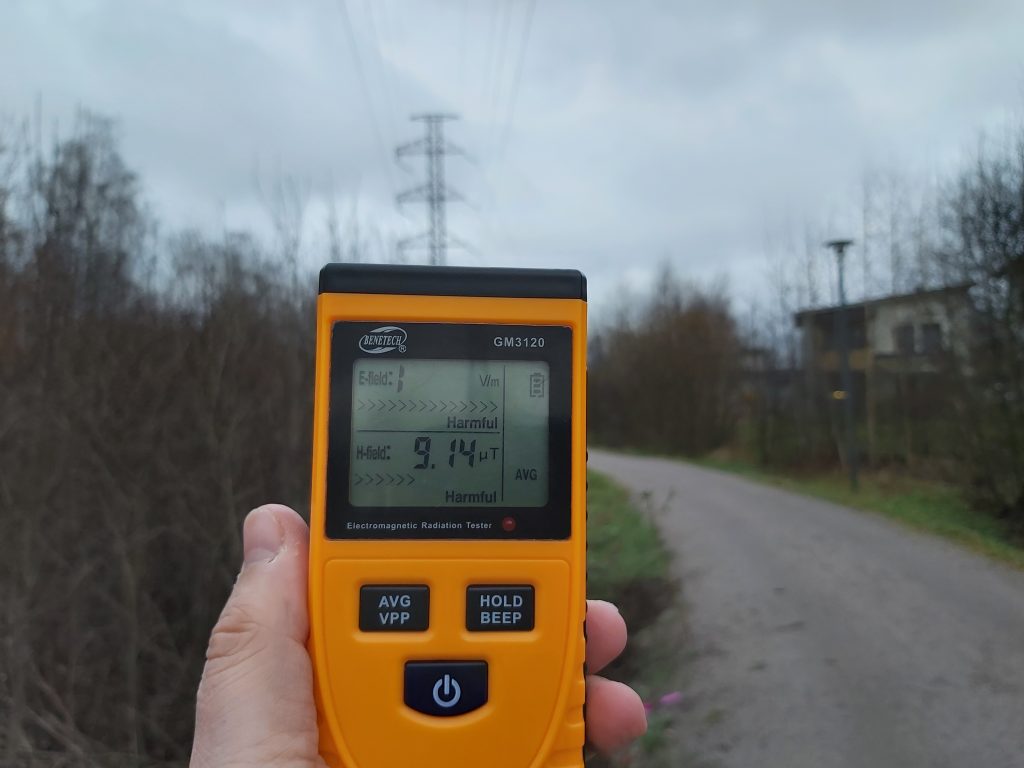
Frequently Asked Questions
How can I protect myself from 5G and EMF radiation?
Limit your time spent online
While there is no way to continue our daily lives without our devices, the first step in protecting yourself from the harmful radiation of EMF and radiofrequency is limiting your time spent on devices. One of the essential things is to stop putting your smartphone in the bedroom and cut your and your children’s time on any device. It’s best to keep your gadgets away from your body when you are not using them.
Try an EMF home adapter
Secondly, you can purchase the EMF home adapter. This adapter will direct the 4G and 5G signals in your home strictly to your devices and not to you. While there is no guarantee that these adapters work, they are indeed worth the try.
Keep yourself updated on the subject
Furthermore, it’s vital to keep yourself updated and educated on the subject and record everything your government does to protect you. Not only should you care about your well-being, but you must think about the well-being of your environment and the planet.
By doing your research and keeping in track with every innovation and advancement in technology, you will know where humanity stands now, and new tools and means of protection always come out.
Live healthy and practice positivity
However it may sound, do not ever subside to fear. Momentarily is not the time to be scared and go on a downward spiral. On the contrary, keep yourself positive, go out in nature, eat your greens and maintain a healthy diet.
Do everything you can to raise your vibration and take care of your physical and mental health. Here we must mention that if you have the time and the place, the best thing you can do is grow your food and keep your energy levels high by consuming live, organic food full of antioxidants. Try to avoid commercial and fast food as much as possible.
The most important thing you can do is give strength and stamina to your system so that the body can protect you from harmful and hazardous threats. Spend more time under the sun, by water, or in the mountains surrounded by trees and nature., ground yourself regularly and connect with your planet.
Move in a place where there are no 5G towers in the area
Likewise, if you can choose where you will continue to live, it’s recommended you select a 5G-free area where you can be sure that there is no radiation within miles of your home. A distance of 400 meters from a small cell antenna is ideal. Nevertheless, the further, the better. Always invest in your well-being and your health, and you will slowly but surely feel the benefits. The body knows how to protect itself; all it needs is a little boost and spirit.
What are the symptoms of EMF exposure?
The most common symptomology of EMF exposure includes disturbance in sleep patterns, insomnia, headaches, tiredness, depression, lack of concentration, inconsistent memory patterns, dizziness, irritability, anxiety, weight loss, rise in body temperature, nausea, skin burning, and more. Recognize that these symptoms can signify another underlying disease, so you must always rule out any other possible conditions to ensure that a symptom is a sign of EMF radiation.
Are EMF meters accurate?
Whether or not an EMF meter is accurate depends on the type of meter you are using. If you want to be sure that the EMF meter you are utilizing is correct, make sure to look for the following indicators:
Reading
The most accurate EMF meters show readings in milligauss (mG) up to decimal points. Other EMF meters that use LED lights are still valid, but not as much. They just flare up when the reading is in a specified range.
Types of radiation
The most reliable EMF meters measure different types of radiation. Various categories like magnetic fields, electric fields, and radio waves are available on the meter. When purchasing an EMF meter, you have to know what kind of radiation you want to measure and do you need a single measure meter or EMF meter that supports different sections.
Range
The sensitivity and the range of the EMF meter are also things to watch out for. Although susceptible EMF meters are expensive, those that you can allow yourself to buy still have a high level of sensitivity and are practical for everyday use. Moreover, the range of the signals is also substantial because if you want to measure high radiofrequency signals, you have to buy a meter that supports more extensive ranges.
Axis
There are two types of EMF meters: single and tri-axis meters. The single-axis meter must be aligned with the electromagnetic field to work, while the tri-axis meter automatically reads the electromagnetic field for you and doesn’t need rotation. Keep in mind that tri-axis EMF meters are always pricey.
Even though not every EMF meter is 100% accurate, they are precise enough to show you whether you are exposed to EMF radiation.
Conclusion
After completing this article, we are optimistic that many of the hazy details about 5G have been resolved. We are also assuming that we offered you the best methods and aid to answer the central question: Are there 5G towers near me? We hope your conversance has risen, and now you understand the real dangers connected to EMF and 5G. If you still don’t believe what is already being proved, only time can tell. What remains is for us to wait and see!


